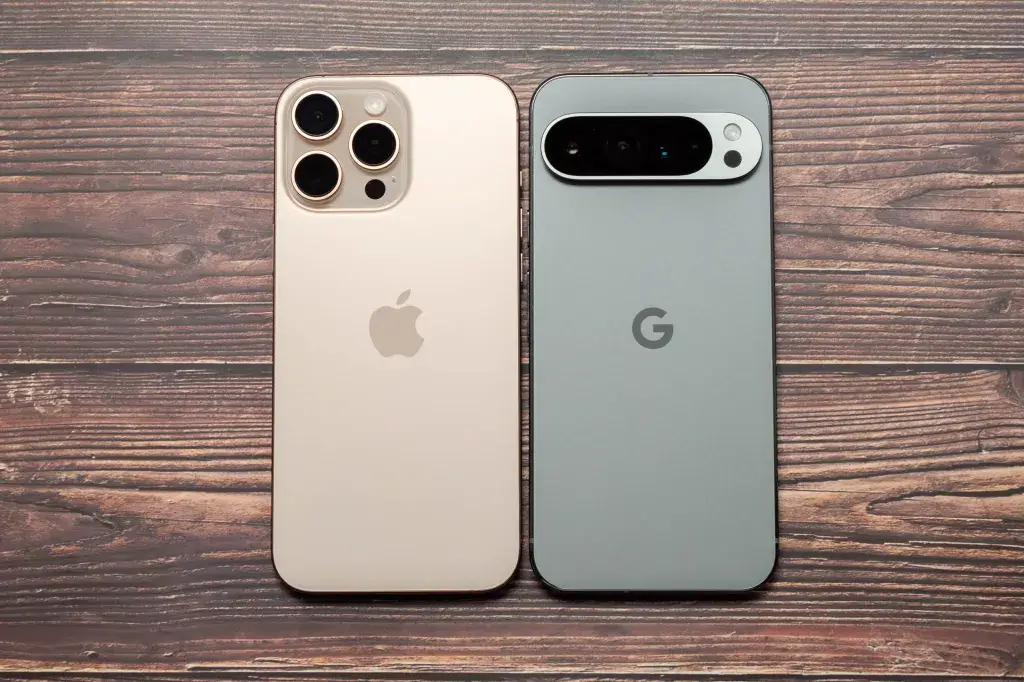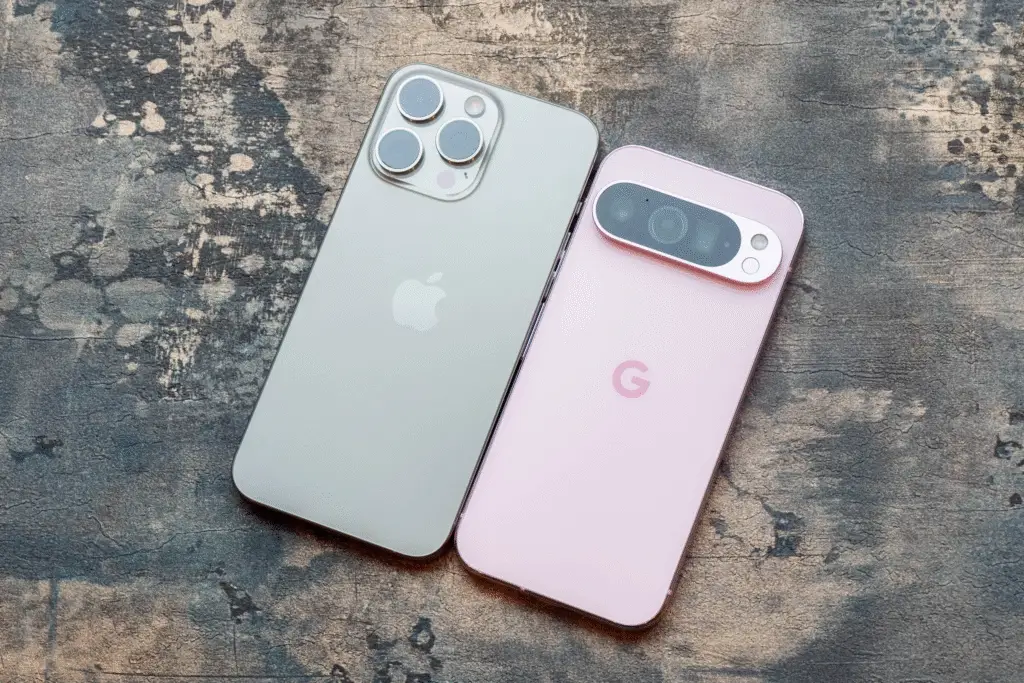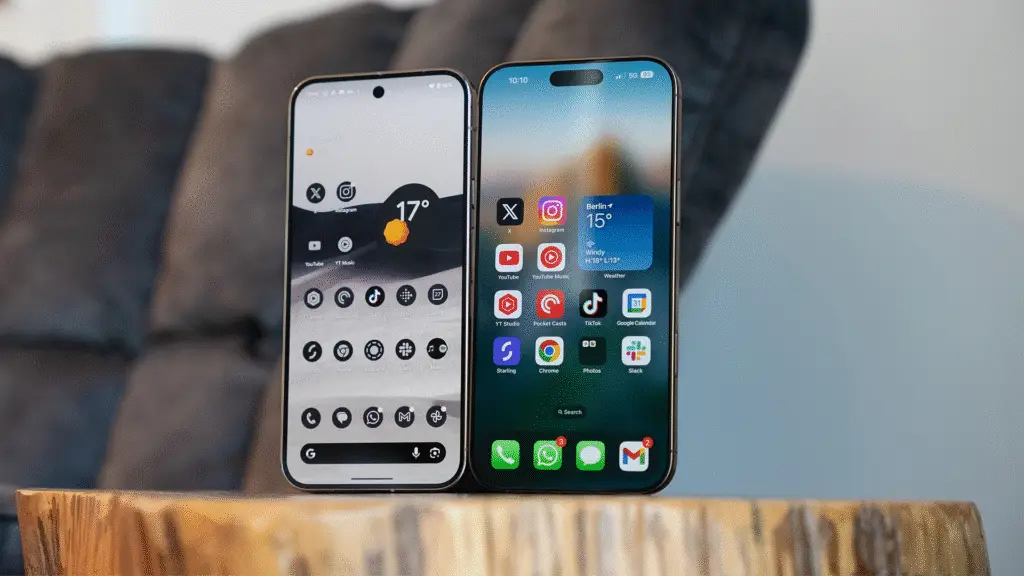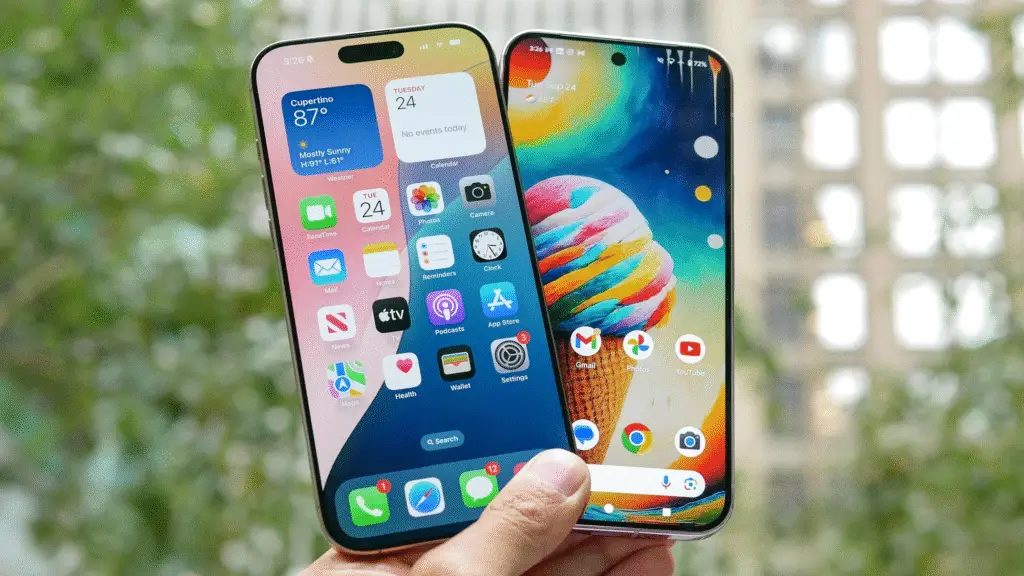In the battle of the smartphone titans, two names always rise to the top: Apple and Google. The iPhone 16 Pro Max and Google Pixel 9 Pro XL represent the very best each company has to offer in 2025. So, which one deserves your hard-earned cash?
A Quick Glance at the Contenders
Apple brings refinement and ecosystem magic with the iPhone 16 Pro Max, while Google hits back with smart AI features and camera innovation in the Pixel 9 Pro XL. Let’s break it all down.
Design & Build Quality
Materials and Aesthetics
The iPhone 16 Pro Max flaunts a titanium frame, giving it a premium yet robust feel. The Pixel 9 Pro XL sticks with aluminum but has a matte finish that’s grippy and elegant.

Size and Weight
- iPhone 16 Pro Max: Slightly heavier, but sleekly contoured for better ergonomics.
- Pixel 9 Pro XL: Lighter and slimmer, making it easier for one-handed use.
Durability and IP Rating
Both phones feature IP68 water and dust resistance. The iPhone’s Ceramic Shield offers better drop resistance, while Pixel’s Gorilla Glass Victus 3 shines against scratches.
Display Technology
Display Size and Type
- iPhone 16 Pro Max: 6.9″ Super Retina XDR OLED
- Pixel 9 Pro XL: 6.8″ LTPO AMOLED
Refresh Rate and Brightness
Both phones support adaptive 1Hz–120Hz refresh rate. The iPhone shines slightly brighter at peak HDR levels (up to 3000 nits), making it perfect for outdoor use.
Color Accuracy and HDR Support
Color accuracy on both is stellar, but iPhone edges out in tone rendering and Dolby Vision support.
Performance Powerhouse
Chipset Comparison – A18 Pro vs Tensor G5
Apple’s A18 Pro is a beast — leading in single-core and multi-core performance. Google’s Tensor G5 focuses more on AI-driven tasks, making your phone smarter by the minute.
RAM and Storage Options
- iPhone: 8GB RAM, 256GB–1TB storage
- Pixel: 12GB RAM, 128GB–1TB storage
Real-World Speed Tests
Gaming, editing, and multitasking are slightly faster on the iPhone, but Pixel holds its own in smart operations like live transcription and voice commands.
Software and User Experience
iOS 18 Features
iOS 18 brings customizable lock screens, better widgets, and new AI-powered Siri that’s finally useful.
Android 15 Experience
Pixel 9 Pro XL ships with Android 15, packed with Google’s best AI tools like Magic Editor 2 and Call Assist.

Customization and Integration
Android wins on customization. iOS, on the other hand, is cleaner, snappier, and perfectly integrated with other Apple devices.
Camera Capabilities
Rear Camera Setup
- iPhone: Triple 48MP system with LiDAR
- Pixel: Triple 50MP sensors with periscope zoom
Front Camera Quality
Pixel 9 Pro XL steps up with a wide-angle 12MP selfie cam. The iPhone holds strong with its 12MP front cam, now with better low-light performance.
AI and Computational Photography
Google’s edge is in real-time AI magic like Magic Eraser and Best Take. Apple’s Smart HDR and Photonic Engine produce sharp, natural images.
Video Recording Features
4K and 8K Video Support
- iPhone: 4K at 60fps, Cinematic Mode, ProRes
- Pixel: 8K at 30fps, 4K with HDR10+
Cinematic and Pro Modes
Apple’s ProRes offers incredible detail for content creators. Pixel’s Cinematic Blur adds flair for everyday users.
Stabilization and Audio
Both excel in stabilization, but Apple’s Spatial Audio is a step ahead.

Battery Life & Charging
Battery Capacity
- iPhone 16 Pro Max: ~4500mAh
- Pixel 9 Pro XL: ~5000mAh
Charging Speed and Tech
Pixel supports 65W wired and 30W wireless charging. The iPhone maxes out at 35W wired and 20W MagSafe.
Battery Endurance in Real Life
Pixel lasts a tad longer in screen-on time. iPhone wins in standby and battery health over time.
Connectivity and Extras
5G, Wi-Fi 7, and Bluetooth
Both offer the latest standards, including Wi-Fi 7 and Bluetooth 5.4. No major differences here.
USB-C vs Lightning Evolution
Apple finally adopted USB-C, leveling the field. The Pixel continues with USB-C and faster transfer rates.
Satellite and Emergency Features
Both phones support satellite SOS features, but Apple has broader international coverage.
Security and Privacy
Face ID vs Face Unlock
- iPhone: Secure Face ID
- Pixel: Face Unlock + under-display fingerprint reader
Privacy Controls in iOS vs Android
iOS remains the leader in transparency and on-device processing. Android is improving, especially with AI-based app permissions.
Biometrics and On-Device AI
Pixel’s Tensor G5 handles more tasks offline, protecting privacy while boosting performance.
Ecosystem and Compatibility
Apple Ecosystem Benefits
From AirPods to MacBooks, iPhone integrates seamlessly. Handoff, AirDrop, and Continuity are unmatched.
Google’s Cross-Platform Integration
Pixel shines with Google Docs, Chrome, and Android Auto, especially across different brands.

Accessory and Device Support
Apple wins for premium, consistent accessories. Pixel offers broader third-party support.
Price and Availability
Launch Dates and Regions
- iPhone 16 Pro Max: September 2025
- Pixel 9 Pro XL: October 2025
Base Pricing Comparison
- iPhone: Starts at $1199
- Pixel: Starts at $999
Value for Money
Pixel offers more bang for the buck, but iPhone justifies its price with polish and resale value.
Pros and Cons Summary
iPhone 16 Pro Max Highlights
- Blazing-fast A18 Pro chip
- Cinematic video tools
- Deep ecosystem
Pixel 9 Pro XL Highlights
- Smart AI features
- Better value
- 8K video support
Which One Should You Buy?
For iOS Fans
If you’re locked into the Apple ecosystem or love premium design, the iPhone 16 Pro Max won’t disappoint.
For Android Lovers
Pixel 9 Pro XL is the smarter, more affordable flagship. You’ll get the best of Google’s AI innovations.
For Creators, Gamers, and Travelers
iPhone is better for creators. Pixel offers more flexibility and AI tools for on-the-go productivity.
Conclusion
At the end of the day, the iPhone 16 Pro Max and Google Pixel 9 Pro XL are both incredible devices — but they cater to different types of users. Whether you’re after pure power, smart AI, or ecosystem advantages, your perfect match depends on your priorities.
